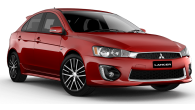Peugeots have a special place in the heart of Australians, older ones at least ; those who can recall the French make's efforts in early around-Australia trials. The 405 marked a move away from tradition for Peugeot. Most of its cars before the 405 were rear-wheel drive, but the 405 joined the trend towards front-wheel drive when it was launched in 1988.
Model watch
Build quality was a major issue for the 405 from the start. Rattles and squeaks were commonplace. Early 405s struggled when run on our low-octane regular unleaded when they were designed to be run on the higher octane fuel in the home land.
The 405 is a pretty four-door sedan and wagon. It has smooth, clean, contemporary lines that even today look smart and modern. Inside, it was typically Peugeot – roomy, with ample accommodation for four, the dash was nicely laid out, there was a good-sized steering wheel, and comfortable seats.
Power initially came from a 1.9-litre single overhead camshaft fuel-injected four cylinder engine. When run on 91 octane unleaded it lost some 10kW from its European spec, which meant it put out a paltry 80kW at 5500 revs and 163Nm at 4250 revs. At best that meant the 405 was a willing performer. In reality it couldn't match cars coming from Japan at the time, it was a car that couldn't be justified on the basis of performance. It was, however, quite economical. Even driven hard it would return around 9.0L/100km around town.
More performance was available in the form of the Mi16 sports sedan with its twin cam four-cylinder engine but it too lost out when run on our fuel. As a consequence it had 108kW at 6500 revs, along with 174Nm.
Transmission choices were a four-speed auto and a five-speed manual. While the auto worked quite well, most buyers preferred the manual to better keep the sluggish four on the boil. Under the 405's stylish skin was MacPherson Strut front suspension and an anti-roll bar, while at the rear it had an independent system of trailing arms, torsion bars, and an anti-roll bar.
Power steering was standard, and it had disc brakes at both ends, and alloy wheels filled the wheel arches. Inside, the 405 was nicely equipped, with standard air-conditioning, power front windows, power mirrors, remote central locking, and six-speaker radio/cassette sound. The S model added leather trim, leather-wrapped steering wheel, and power rear windows. The Mi16 was distinguished on the outside by a rear spoiler and front fog lamps. Inside it had air-con, remote central locking, leather-wrapped steering wheel, power mirrors, power front windows and six-speaker sound.
The 1.9-litre engine gave way to a much better 2.0-litre four in 1993. It was one of the changes that transformed the car.
Buyers could then choose from the SRi and the luxury STi, the Mi16. Peugeot also unveiled a diesel version the same year, the SRDT. The 1.9-litre turbocharged, intercooled four-cylinder diesel delivered 68kW at 4000 revs along with 196Nm at 2250 revs. Fuel efficiency was great.
In the shop
Peugeot service specialist Ted Geermans has seen plenty through his workshop and advises against buying early 405s. Better to buy a post-1993 model, STi or diesel, which now give little trouble. Driver airbags were standard on the Mi16 and STi from October 1994, optional on the SRi and SRDT.
Owner's view
Darren Dumble owns a 1994 SRDT with 200,000km on the clock. The car is fantastic, he says, getting better than 7.0 litres/100 km around town, and up to 1150 km between refills. There is no sign of rust in the body, and no oil leaks.
Look for
- Comfortable ride
- Good diesel engine option
- Great handling
- Better performance from post-1993 2.0-litre engine
- Poor build quality, squeaks and rattles in early cars
Rating
8/20 (pre-93)
12/20 (post-93)
Nicely styled European that rides and handles like a dream.
Peugeot 405 1989:
| Engine Type | Inline 4, 1.9L |
|---|---|
| Fuel Type | Unleaded Petrol |
| Fuel Efficiency | 11.5L/100km (combined) |
| Seating | 5 |
| Price From | $2,640 - $4,180 |


.jpg)

.jpg)













.png)




.jpg)

